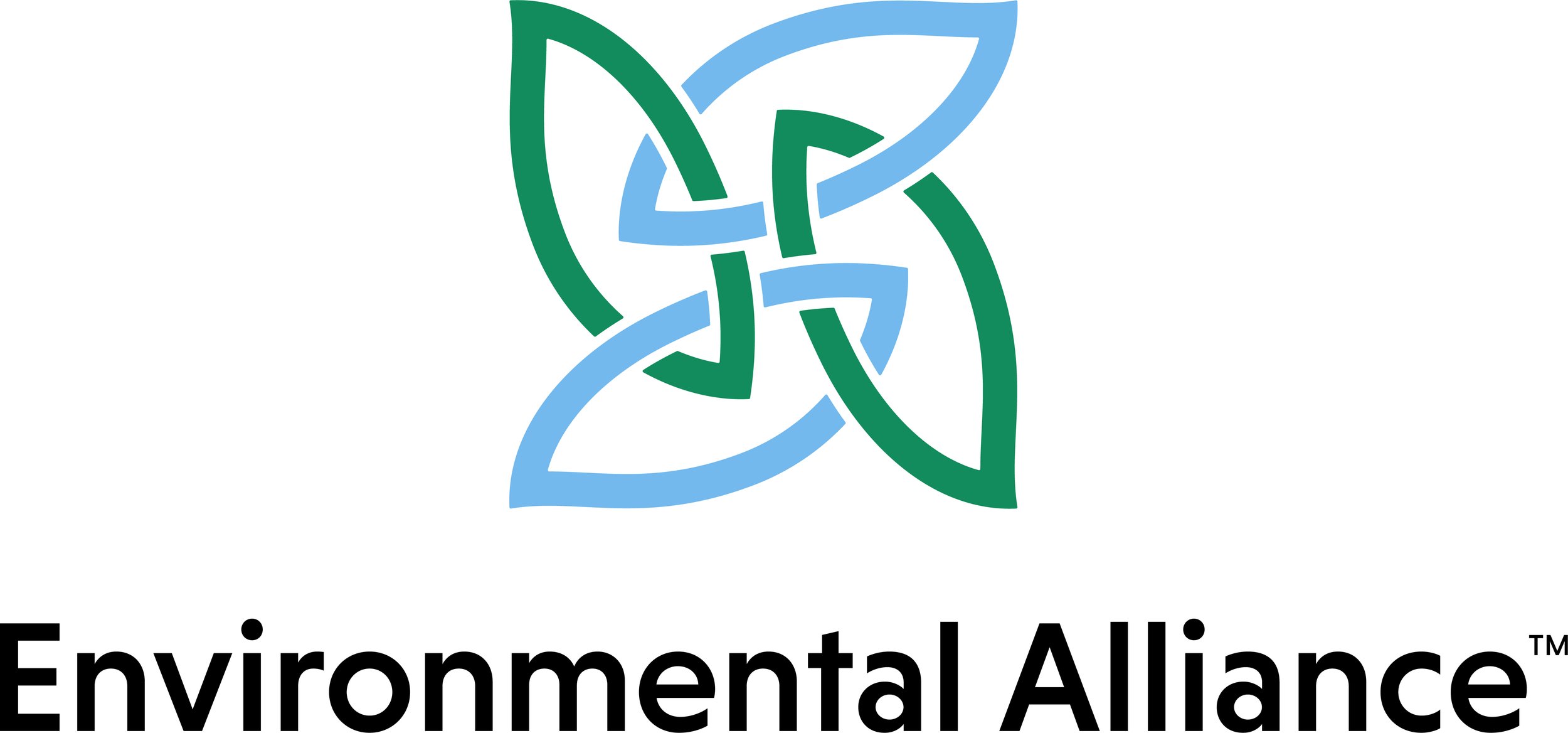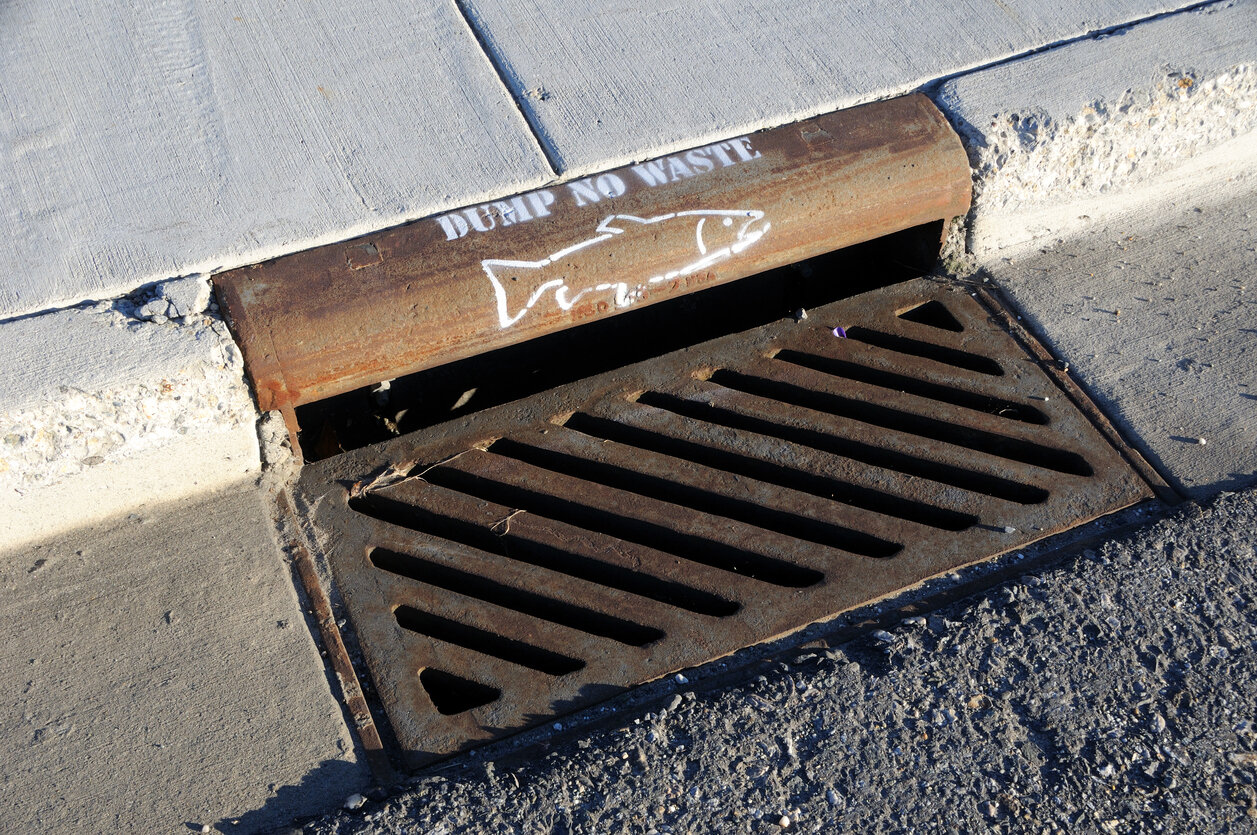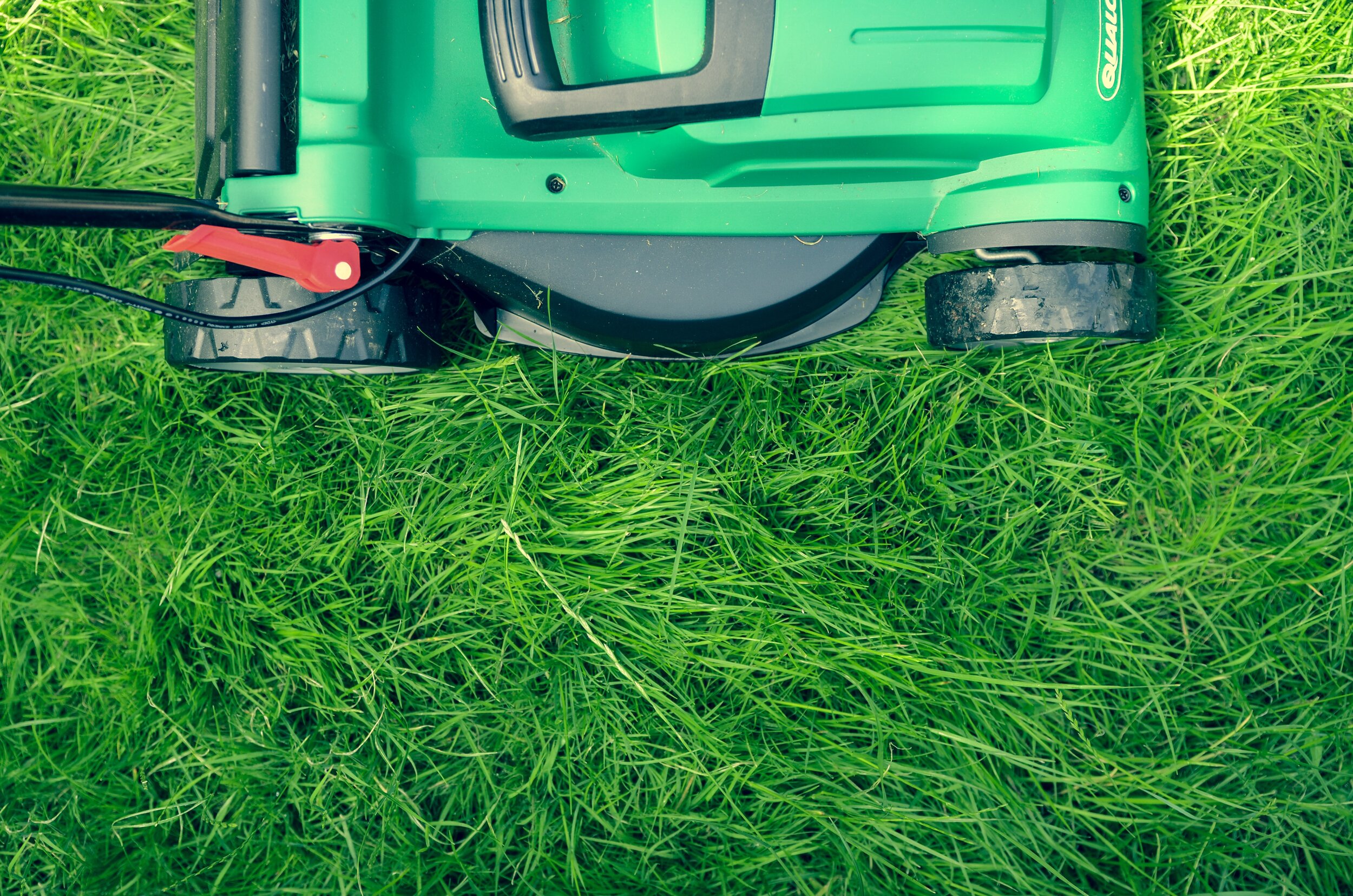When it rains, it pollutes, and it all starts in your neighborhood
We’ve all seen it: plastic bags, beverage bottles and cans, cigarette butts, diapers, and more on the sides of our roads, on our sidewalks, and in our parks.
The water that doesn’t soak into the soil flows across our yards, streets, and sidewalks into the storm drains on your street. As the water travels to the storm drain, it picks up any pollutants in its path like grass clippings, plastic trash, pet waste, motor oil, pesticides, and more.
Polluted runoff is the nation’s most significant threat to clean water. Unlike the water that goes down your drain to the sewer, water that flows into storm drains is not treated and filtered for pollutants at a treatment center or in a septic system. Anything that enters a storm sewer system is discharged untreated into the water bodies we use to swim, fish, and provide drinking water.
Once trash and other pollutants get into our waterways, they are nearly impossible to remove completely, so everyone needs to be aware of our effects on the water we use in our everyday lives.
We have a duty to protect water not only for ourselves but for our future generations. You can make a difference with your day-to-day actions that don’t require anything other than a thought.
How does a storm drain work?
A storm drain is a tool for managing the runoff from rainfall.
Every time it rains, water runs off of your roof, through your gutters, and into the street. It picks up debris and pollutants along the way from your home, yard, and the street. This water flows into the storm drains on your street and then through a system of pipes into a nearby stream, pond, reservoir, or other body of water.
Unlike the water that goes down the drain in your home and gets treated, stormwater runoff is released into waterways without filtration.
It can be incredibly easy to have an out of sight, out of mind mentality when it comes to stormwater treatment because most people would assume that their lawn is absorbing most of the rain after a storm. The reason that most water runs right off of your lawn and down storm drains is since traditional lawns have short root systems and extremely compact soil, which turns many lawns into impermeable surfaces like roads and sidewalks.
Local storm drains lead to…
drainage areas like these and enter waterways.
The Offenders- What Is Really Flowing Down Our Street?
Too frequently, storm drains are treated like sinks or garbage cans. I’ve seen people dump buckets of soapy water down them in my neighborhood and drain their chlorine pools down the street.
Only the water that falls from the sky or melts during winter should flow into a storm drain. Anything else entering a storm drain is called an illicit discharge; this includes many things you may have never even thought are polluting the water bodies around you.
These are the top illicit discharge offenders:
Pet Waste
Pet waste contains A LOT of bacteria and parasites that are a health threat to people, wildlife. Plus, pet waste adds nutrients to the water that reduce oxygen available for aquatic life and lead to more algae.
Yard Clippings
Leaves and grass clippings that build up along curbs and storm drains all contain phosphorus. Too much phosphorus in a lake or other waterbody causes algae blooms and reduces oxygen in the water for other living things.
Just a one-yard waste bag of leaves has enough phosphorus to create 100 lbs of algae in the water, which is a pretty large bloom.
Ice Salt
Salt is often overused based on misinformation. While we need some salt to keep roads and pathways clear and safe, many winters end up with a lot of salt being applied but not doing any work.
Instead, the salt washes off into lakes and rivers, preventing water in lakes and ponds from mixing because the saltier water is heavier than freshwater. The lack of mixing, in turn, means algae blooms are more likely to occur, reducing available sunlight and nutrients in the water below.
There is no easy or feasible way to remove salt from these waters, and the salt is toxic to wildlife.
Trash
Trash is the most obvious thing that we know should not be flowing down our street anywhere into the environment, yet it still is found on streets everywhere in the country.
Plastics, Styrofoam, and even cardboard pieces break down into microscopic fragments once they enter the water and get ingested by the same aquatic life many people eat!
A significant reduction in single-use items is needed to control the number of microplastics and other micro-toxins entering our food chain and drinking water.
Harmful products
Motor oil, soapy water, chlorine pool water, fertilizers, and pesticides are all things that need to be handled with care and disposed of properly.
It is illegal to dispose of any household product or water mixed with a product down a storm drain, and you can be fined if caught or reported. Toxins and chemicals found in these products not only harm any living thing they come in contact with, but they are also challenging to remove from water bodies.
Photo by Daniel Watson on Unsplash
What Can You Do?
Although it seems like there are a lot of pollutants that can flow into our storm drains, just changing a few simple actions can make a world of difference for aquatic environments. Here are our top seven tips for reducing pollution in local storm drains:
When mowing the yard, do not blow clippings into the street or onto paved surfaces. Sweep them, compost them, or have them collected as yard waste. Clippings must be 1” in length or less to easily fall back to the soil and decompose quickly. Adding these clippings to the soil can improve your soil’s organic matter and health.
If you see litter and trash in your neighborhood, pick it up, and properly dispose of it. Securing your garbage can lids can reduce your trash impact! If you have a bit more time, organize or participate in a trash cleanup near a water source!
Reduce stormwater runoff by using a rain barrel and directing downspouts onto your lawn or a rain garden!
Do not dispose of yard waste, motor oil, soap suds, dirt, or pet waste down the storm drain. Properly dispose of excess paints through a local household hazardous waste collection program, or donate unused paint to local organizations. You may be surprised at the options near you!
Washing cars on the grass in your yard or an automated car wash will keep the phosphates from entering streams and rivers. Use soaps without harmful chemicals and sparingly.
As a dog owner, do your duty and scoop up their waste and dispose of it in your trash. Cleaning it up immediately is the most effective measure, and it can not be flushed in all sewer systems (check local guidelines) or thrown into ponds or gardens.
When putting fertilizer or pesticides on your lawn or garden, follow the directions on the bag. Avoid putting anything in your yard immediately before it rains, as it will just wash away into the stormwater runoff. Consider using natural pesticides or fertilizer methods. There are many resources and practices online.
Our Challenge To You: Adopt A Storm Drain!
Want to go a step further to prevent storm drain pollution? Adopt a storm drain near you.
Volunteer fifteen minutes, twice a month, for cleaner waterways and healthier communities.
Storm drains flow directly to local lakes, rivers, and wetlands, acting as conduits for trash and organic pollutants. Adopt a Drain asks residents to adopt a storm drain in their neighborhood and keep it clear of leaves, trash, and other debris to reduce water pollution.
All you have to do is go to this website, enter your address, and adopt as many drains in your neighborhood as you want!
You can see who else in your community is protecting their storm drains and how much trash has been saved from entering the waterways in your community.
Once you sign up, try to set a goal to get 3 more people you know to Adopt A Drain! Share photos of you cleaning your drain to get others inspired and show them how quick and easy it is to make a HUGE difference.
By being more mindful and conscious of the choices you make every day, you can do your responsibility in protecting our most crucial resource- water.





